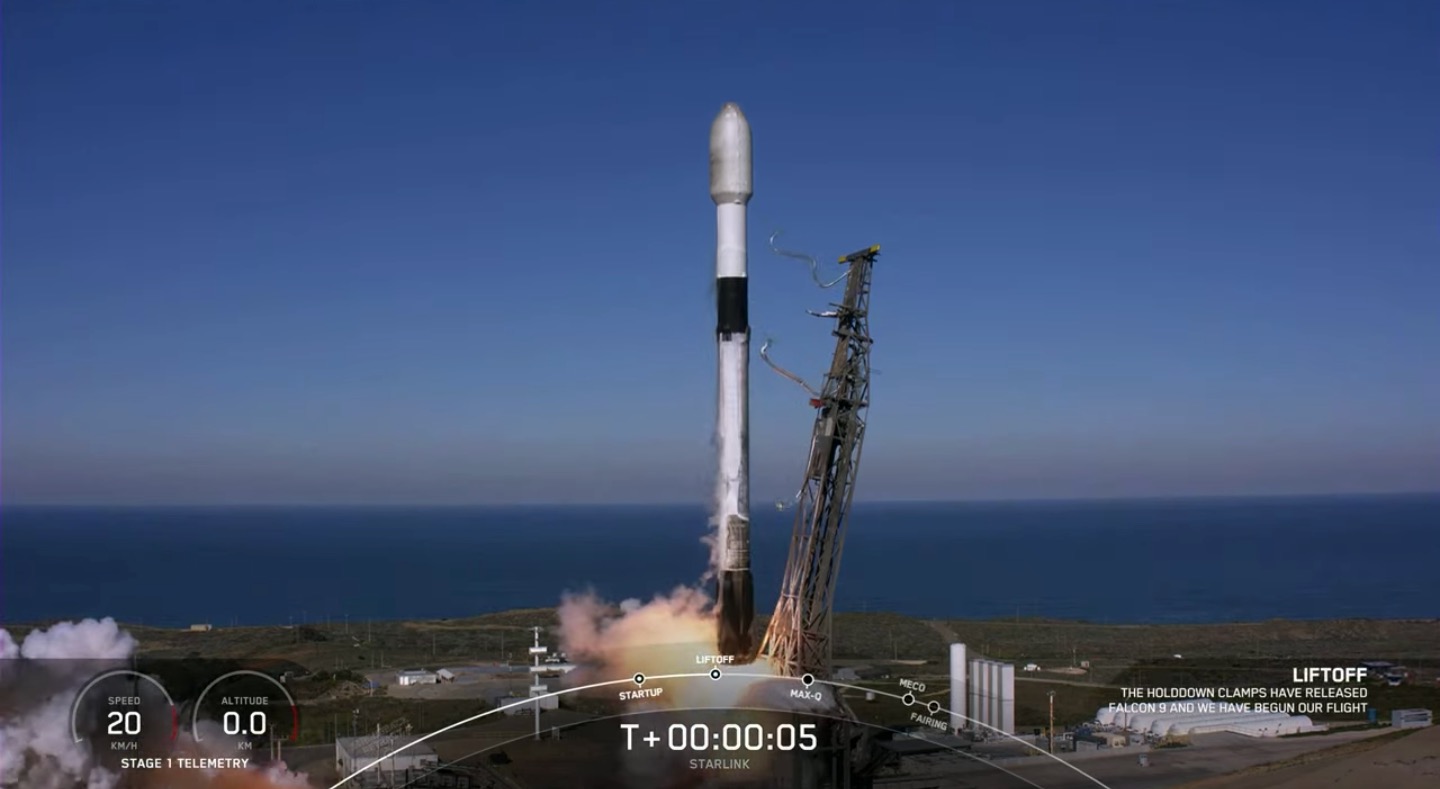SpaceX launches 50 Starlink satellites, lands rocket on ship at sea
SpaceX launched 50 Starlink internet satellites and landed the returning rocket on a ship at sea today (Feb. 25).
A two-stage Falcon 9 rocket topped with 50 Starlink internet spacecraft lifted off from Vandenberg Space Force Base in California today at 12:12 p.m. EST (1712 GMT; 9:12 a.m. local California time).
A little less than nine minutes later, the Falcon 9's first stage came back down to Earth for a vertical touchdown on Of Course I Still Love You, a SpaceX droneship that was stationed several hundred miles off the California coast.
The second stage, meanwhile, continued carrying the 50 satellites to orbit. The spacecraft deployed as planned about an hour after liftoff, SpaceX confirmed via Twitter today.
Related: SpaceX's Starlink satellite megaconstellation launches in photos

It was the fourth launch and landing for this particular booster. The first stage also helped launch the Sentinel-6 Michael Freilich Earth-observation satellite for NASA and the European Organization for the Exploitation of Meteorological Satellites in November 2020, as well as 60 Starlink satellites in May 2021 and NASA's Double Asteroid Redirection Test spacecraft in November 2021, SpaceX representatives said.
Such reuse is a priority for SpaceX and its founder and CEO, Elon Musk. Musk aims to help humanity colonize Mars, and the billionaire entrepreneur believes that fully and rapidly reusable rockets are the key breakthrough needed to make that happen.
Breaking space news, the latest updates on rocket launches, skywatching events and more!
Today's launch was the third Starlink mission of February for SpaceX, after a 49-satellite launch on Feb. 3 and a 46-satellite liftoff on Monday (Feb. 21). The Feb. 21 mission marked the 100th landing of a Falcon 9 first stage during an orbital flight.
The Feb. 3 mission was also notable, but for a very different reason. Shortly after liftoff, a solar eruption triggered a geomagnetic storm on Earth, which increased the density of our atmosphere enough to bring down most of the newly launched satellites via drag. SpaceX has said that it will launch Starlink spacecraft to slightly higher initial altitudes in the future to protect against such storms.
SpaceX has launched more than 2,000 Starlink satellites to date, and many more are slated to go up. The company has permission to loft 12,000 of the broadband spacecraft, and it has applied for approval to launch up to 30,000 more.
Editor's note: This story was updated at 12:30 p.m. EST with news of the successful launch and rocket landing, then again at 1:20 p.m. EST with news of satellite deployment.
Mike Wall is the author of "Out There" (Grand Central Publishing, 2018; illustrated by Karl Tate), a book about the search for alien life. Follow him on Twitter @michaeldwall. Follow us on Twitter @Spacedotcom or on Facebook.

Michael Wall is a Senior Space Writer with Space.com and joined the team in 2010. He primarily covers exoplanets, spaceflight and military space, but has been known to dabble in the space art beat. His book about the search for alien life, "Out There," was published on Nov. 13, 2018. Before becoming a science writer, Michael worked as a herpetologist and wildlife biologist. He has a Ph.D. in evolutionary biology from the University of Sydney, Australia, a bachelor's degree from the University of Arizona, and a graduate certificate in science writing from the University of California, Santa Cruz. To find out what his latest project is, you can follow Michael on Twitter.
